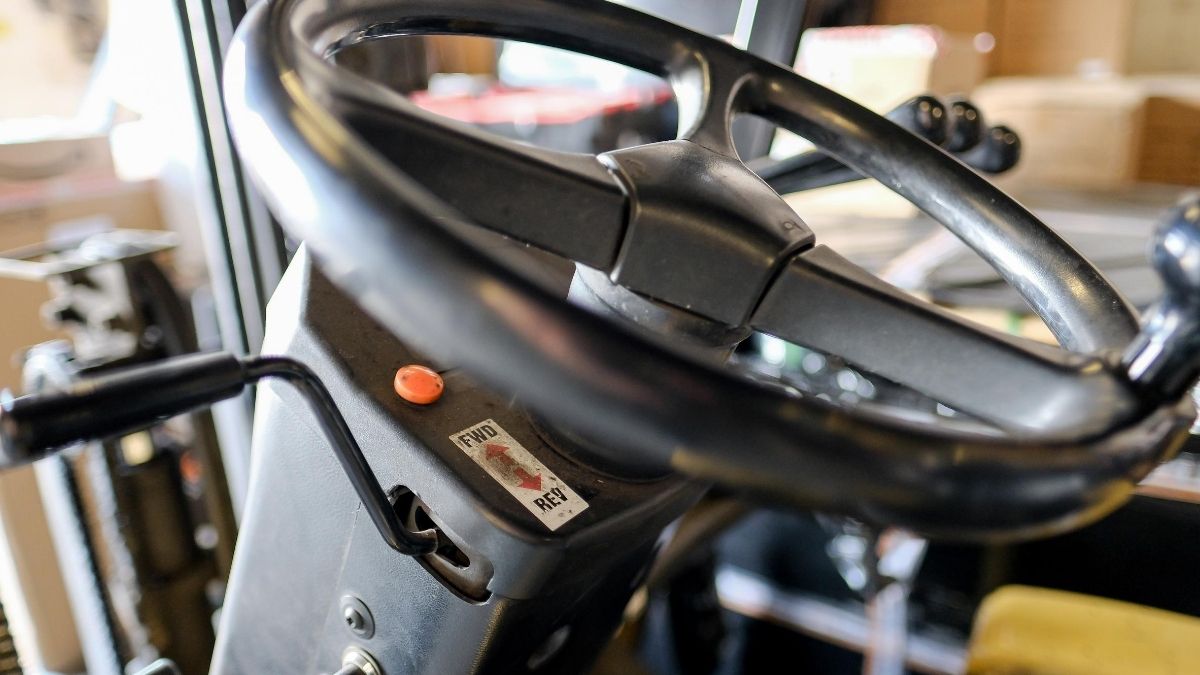Understanding the most common problems with forklifts and how to troubleshoot them is an important part of safely and efficiently operating one throughout the workplace. This guide will introduce you to these common forklift problems and some effective methods for dealing with them. That way, when a problem occurs, you’ll be able to work through it and find a solution sooner rather than later.
Refusal To Start
This is a common forklift issue, but the resolutions are relatively easy. If your forklift won’t start, the first place you should look at is the fuel tank. If your forklift is out of fuel, simply fill it up and get back to business. If you run into problems with insufficient fuel levels again, investigate for any leaks. Another issue could be low coolant levels causing your engine to overheat.
That being said, it could instead be an issue with the electric battery if that’s the type of forklift you’re using. In this case, inspect the battery for any corrosion buildup or insufficient electrolyte levels. Cleaning and watering are just as essential to taking care of forklift batteries as correctly charging them and keeping an eye on extreme temperatures. This means that if a responsible operator is at the helm, corrosion buildup or low electrolyte levels shouldn’t be a problem. If your fluid levels are fine, and there is no corrosion on the battery, but you are still experiencing issues, seek out professional help to determine what’s going wrong.
Mast Malfunctions
Other common problems with forklifts are mast malfunctions, which are frustrating, but the solutions are simple. When the mast is malfunctioning, it will manifest in either erratic or slow lifting/lowering movements, or a complete inability to lift/lower. If you’re experiencing this issue, check the hydraulic fluid levels. Forklifts use hydraulics to control the mast movement, so if you’re running into issues, the hydraulic fluid levels are most likely the culprit.
To be certain of the cause, just like with the last step, make sure to keep an eye out for any signs of leaking. If the issues extend beyond the necessity for some hydraulic fuel, it could point to a clog in the hydraulic system itself.
Steering Problems
If you attempt to drive your forklift and the steering isn’t working properly, step out and assess the issue. It is an important part of every OHSA certified forklift training program to understand what could be going wrong as you operate the machinery, after all, so you should make use of that knowledge. The two most likely reasons for this are insufficient steering fluid transmission levels and worn-out gears. If the issue is with the steering fluid transmission, you can fill it back up, and it should be ready to go. However, you’ll need the help of a trained professional if the problem points to the gears becoming too worn. Another possible cause of your steering problems is a misaligned tire, so if the fluid level isn’t the issue, make sure to inspect the tires before assuming it’s a worn gear problem.










 Deering Estate
Deering Estate
 Massage Envy South Miami
Massage Envy South Miami
 Calla Blow Dry
Calla Blow Dry
 My Derma Clinic
My Derma Clinic
 Sushi Maki
Sushi Maki
 Sports Grill
Sports Grill
 The Healthy Kitchen
The Healthy Kitchen
 Golden Rule Seafood
Golden Rule Seafood
 Malanga Cuban Café
Malanga Cuban Café

 Kathleen Ballard
Kathleen Ballard
 Panter, Panter & Sampedro
Panter, Panter & Sampedro
 Vintage Liquors
Vintage Liquors
 The Dog from Ipanema
The Dog from Ipanema
 Rubinstein Family Chiropractic
Rubinstein Family Chiropractic
 Your Pet’s Best
Your Pet’s Best
 Indigo Republic
Indigo Republic




 ATR Luxury Homes
ATR Luxury Homes


 2112 Design Studio
2112 Design Studio
 Hamilton Fox & Company
Hamilton Fox & Company
 Creative Design Services
Creative Design Services
 Best Pest Professionals
Best Pest Professionals
 HD Tree Services
HD Tree Services
 Trinity Air Conditioning Company
Trinity Air Conditioning Company
 Cisca Construction & Development
Cisca Construction & Development
 Mosquito Joe
Mosquito Joe
 Cutler Bay Solar Solutions
Cutler Bay Solar Solutions


 Miami Royal Ballet & Dance
Miami Royal Ballet & Dance
 Christopher Columbus
Christopher Columbus
 Pineview Preschools
Pineview Preschools
 Westminster
Westminster
 Carrollton
Carrollton
 Lil’ Jungle
Lil’ Jungle
 Frost Science Museum
Frost Science Museum
 Palmer Trinity School
Palmer Trinity School
 South Florida Music
South Florida Music
 Pinecrest Orthodontics
Pinecrest Orthodontics
 Dr. Bob Pediatric Dentist
Dr. Bob Pediatric Dentist
 d.pediatrics
d.pediatrics
 South Miami Women’s Health
South Miami Women’s Health

 The Spot Barbershop
The Spot Barbershop
 My Derma Clinic
My Derma Clinic




 Miami Dance Project
Miami Dance Project

 Rubinstein Family Chiropractic
Rubinstein Family Chiropractic
 Indigo Republic
Indigo Republic

 Safes Universe
Safes Universe
 Vintage Liquors
Vintage Liquors
 Evenings Delight
Evenings Delight





 Atchana’s Homegrown Thai
Atchana’s Homegrown Thai
 Baptist Health South Florida
Baptist Health South Florida

 Laser Eye Center of Miami
Laser Eye Center of Miami
 Visiting Angels
Visiting Angels
 OpusCare of South Florida
OpusCare of South Florida

 Your Pet’s Best
Your Pet’s Best





 HD Tree Services
HD Tree Services
 Hamilton Fox & Company
Hamilton Fox & Company


 Creative Design Services
Creative Design Services